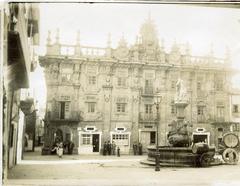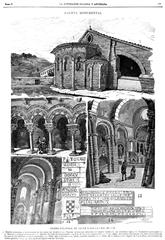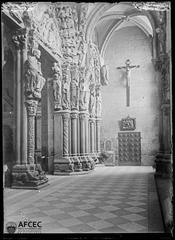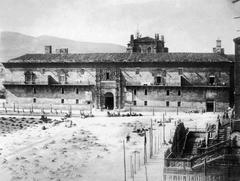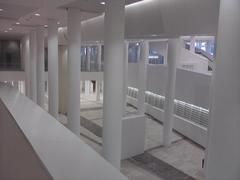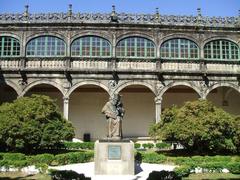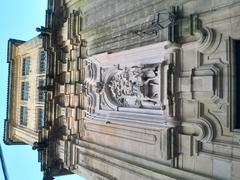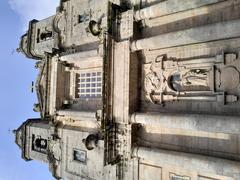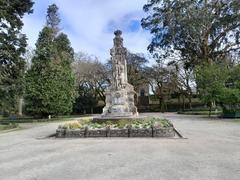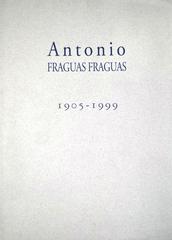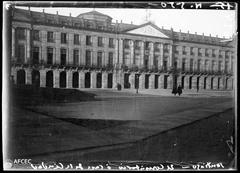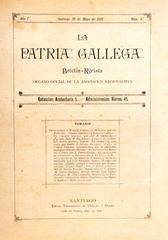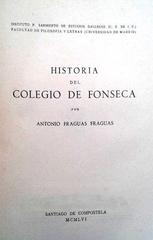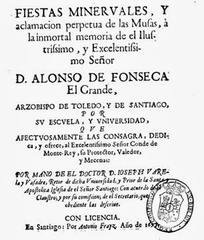Pazo do Hórreo: Visitor Guide, History, and Santiago de Compostela’s Political Landmark
Date: 03/07/2025
Introduction
Situated in the historic center of Santiago de Compostela, the Pazo do Hórreo is not only an architectural gem but also a powerful symbol of Galician identity and self-governance. Serving today as the seat of the Parliament of Galicia, the building encapsulates over a century of regional transformation, from its origins as a veterinary school to its current role at the heart of Galicia’s political life (Parliament of Galicia inauguration). This comprehensive guide provides essential visitor information, details on architectural and historical significance, practical travel tips, and insights into the building’s ongoing evolution.
Historical Overview
Origins and Early Years
The Pazo do Hórreo was constructed between 1903 and 1915, designed by Antonio Bermejo y Arteaga with political backing from Eugenio Montero Ríos. Inspired by the French École nationale d’Alfort, the building initially housed the School of Veterinary Medicine of Santiago de Compostela, reflecting early 20th-century priorities in scientific and agricultural education (gl.wikipedia).
Following closure of the school during the dictatorship of Primo de Rivera in the 1920s, the building was repurposed as a military barracks—a testament to the region’s turbulent political atmosphere (es.wikipedia).
Transition to Parliament
In 1986, the Xunta de Galicia acquired the property from the Ministry of Defense as part of the consolidation of Galician self-government after the Statute of Autonomy in 1981. After extensive renovations led by architect Andrés Reboredo, the Pazo do Hórreo officially became the seat of the Galician Parliament in 1989 (Parliament of Galicia inauguration).
Architectural Highlights
Exterior and Layout
The Pazo do Hórreo is an outstanding example of early 20th-century Galician civil architecture, characterized by a neoclassical façade, symmetrical windows, robust granite masonry, and a central entrance framed by pilasters and a pediment (es.wikipedia). The design draws clear inspiration from European academic traditions, yet retains local Galician features.
Interior Spaces
Inside, the building is organized along a central axis, with ceremonial halls, committee rooms, and the main parliamentary chamber. Decorative elements include regional artworks, historical portraits, and heraldic symbols, all reinforcing Galician cultural identity.
Renovations and Accessibility
Multiple phases of renovation have modernized the building while preserving its historical essence. Recent upgrades have prioritized accessibility, including removal of architectural barriers, installation of elevators, and redesign of entrances for improved pedestrian and vehicular flow (Parliament of Galicia accessibility improvements; Galiciae). The latest restoration project, initiated in 2025, focuses on façade renewal, interior modernization, and enhanced energy efficiency (La Voz de Galicia).
Visiting the Pazo do Hórreo
Location
The Pazo do Hórreo is centrally located at Rúa do Hórreo 63, Santiago de Compostela, within walking distance of the city’s UNESCO-listed old town and major attractions like the Cathedral of Santiago and Praza do Obradoiro (atickettotakeoff.com).
Visiting Hours
- Monday to Friday: 10:00 AM – 6:00 PM
- Weekends and Public Holidays: Closed
Hours may be adjusted during parliamentary sessions or special events. Always check the official website for updated information.
Admission and Tours
- Entry: Free of charge
- Guided Tours: Available by prior booking, highly recommended for deeper insights into the building’s history and legislative function.
Reservations can be made via the official Parliament of Galicia website.
Accessibility
- Step-free access at main entrance
- Elevators serving all floors
- Accessible restrooms and tactile signage for visually impaired visitors
(Galiciae; La Voz de Galicia)
Photography and Security
- Photography is permitted in public and designated areas; restrictions apply during official sessions.
- All visitors must pass through a security checkpoint and present ID.
Nearby Attractions and Itineraries
Combine your visit to the Pazo do Hórreo with these nearby Santiago de Compostela historical sites:
- Cathedral of Santiago de Compostela: Iconic pilgrimage destination (atickettotakeoff.com)
- Praza do Obradoiro: Lively main square
- Pazo de Fonseca: Historic residence, now part of the university (hollyhitstheroad.com)
- Hostal de los Reyes Católicos: Once a pilgrim hospital, now a luxury hotel
A walking tour connecting these sites offers a comprehensive experience of the city’s political, spiritual, and architectural heritage.
Symbolism and Civic Role
The Pazo do Hórreo represents Galicia’s path to autonomy and democracy. Its adaptive reuse—from educational center to military barracks, then to the seat of Parliament—mirrors the region’s resilience and its assertion of self-governance (Faro de Vigo). The term “pazo” references traditional Galician manor houses, while “hórreo” alludes to the iconic granary structures that dot the rural landscape (Galicia Tips; Viaje Camino de Santiago). The Parliament’s commitment to accessibility, transparency, and cultural engagement is reflected in its ongoing renovations and robust educational programs.
Frequently Asked Questions (FAQ)
Q: What are the Pazo do Hórreo visiting hours?
A: Monday to Friday, 10:00 AM – 6:00 PM; closed weekends and holidays.
Q: Is there an entry fee or do I need a ticket?
A: Admission is free; guided tours require advance booking.
Q: Is the Pazo accessible for people with disabilities?
A: Yes, recent renovations have ensured full accessibility.
Q: Are guided tours available?
A: Yes, book through the official website.
Q: Can I take photos inside?
A: Photography is allowed in public areas but may be restricted during official events.
Q: How do I reach the Pazo?
A: Located in central Santiago, easily accessible by foot or public transport.
Ongoing and Future Developments
A significant restoration project is underway in 2025, aiming to preserve the historical façades, modernize interiors, and enhance accessibility (La Voz de Galicia). The Parliament’s broader civic mission includes the development of the Panteón de Galegas e Galegos Ilustres, honoring notable regional figures and deepening the building’s role in Galician public life.
Visitor Recommendations
- Book ahead for guided tours, especially during busy periods.
- Notify staff in advance for special accessibility needs.
- Explore nearby sites to make the most of your visit to Santiago’s historic core.
- Check the official website for the latest visitor information, events, and restoration updates.
Sources and Further Reading
- Parliament of Galicia inauguration
- Parliament of Galicia accessibility improvements
- Galiciae: Accessibility and inclusion
- La Voz de Galicia: Restoration project
- Faro de Vigo: Political significance
- AticketToTakeoff: Santiago de Compostela sites
- Wikipedia: Pazo do Hórreo
- Galician Wikipedia: Pazo do Hórreo
- Galicia Tips: Hórreos
- Viaje Camino de Santiago: Hórreos
- Holly Hits the Road: Pazo de Fonseca
Plan your visit and immerse yourself in Galician history at the Pazo do Hórreo!


